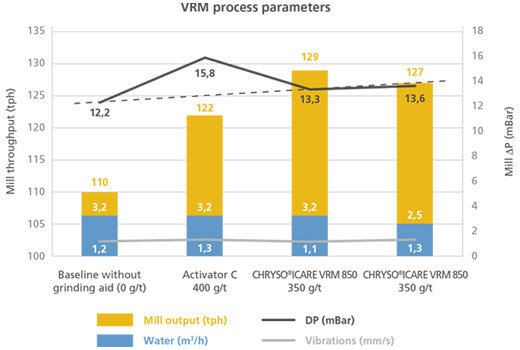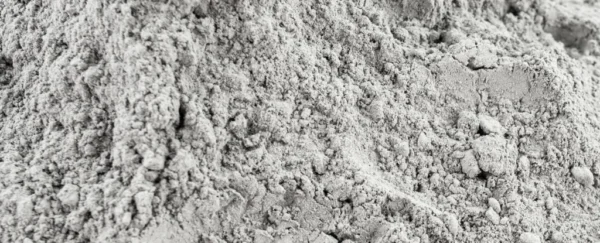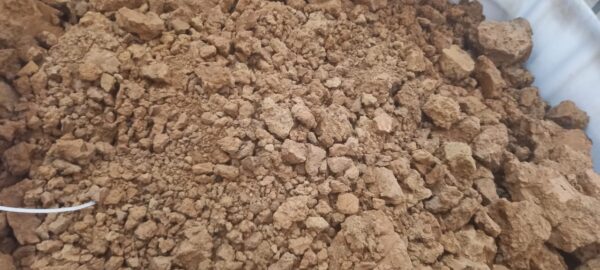IMPROVING VRM STABILITY TO ACHIEVE HIGHER CLINKER FACTOR REDUCTION

In some specific process conditions (e.g. Vertical Roller Mills), the use of conventional high performance strength enhancers can lead to process limitations. These sides effects are often controlled by reducing the dosing rate of cement additive. However, this leads to a lack of grinding aid in cement to achieve all the benefits from the chemicals. This is further emphasised with strength enhancers that are used for their combined properties as process improvers and chemical activators to boost cement strengths. In such a situation, the appropriate balance between process sensitivity (especially with process differential pressures) and cement reactivity can be difficult, if not impossible, to achieve.
CHRYSO®ICARE gives the possibility for full optimisation. Graph. 1 illustrates the added value provided by CHRYSO®ICARE VRM 850 in comparison with standard activator. More than +15% mill output increase can be achieved with limited impact on mill ΔP. This is significantly higher than conventional solutions which struggle with ΔP control.

Graph. 1: VRM process parameters
Such control on process stability gives the possibility to convert part of this performance into cement quality enhancement. Reducing water injection into the mill on grinding table leads to a direct impact on cement strengths. When combined with CHRYSO®ICARE chemical activation, clinker factor can be pushed on the higher side (+2% further than conventional solutions) without impacting cement quality (Table 1). Final optimisation leads to an outstanding operational picture: +17 tph; water reduction by 20%; and Clinker Factor improved by 4% with same level of strengths.

Despite optimum operational limits which are often achieved by cement plants, CHRYSO®ICARE is a disruptive and efficient lever to tackle clinker factor reduction and therefore CO2 emissions footprint for the cement industry.
LAURENT GUILLOT – CHRYSO Cement Technical Director





